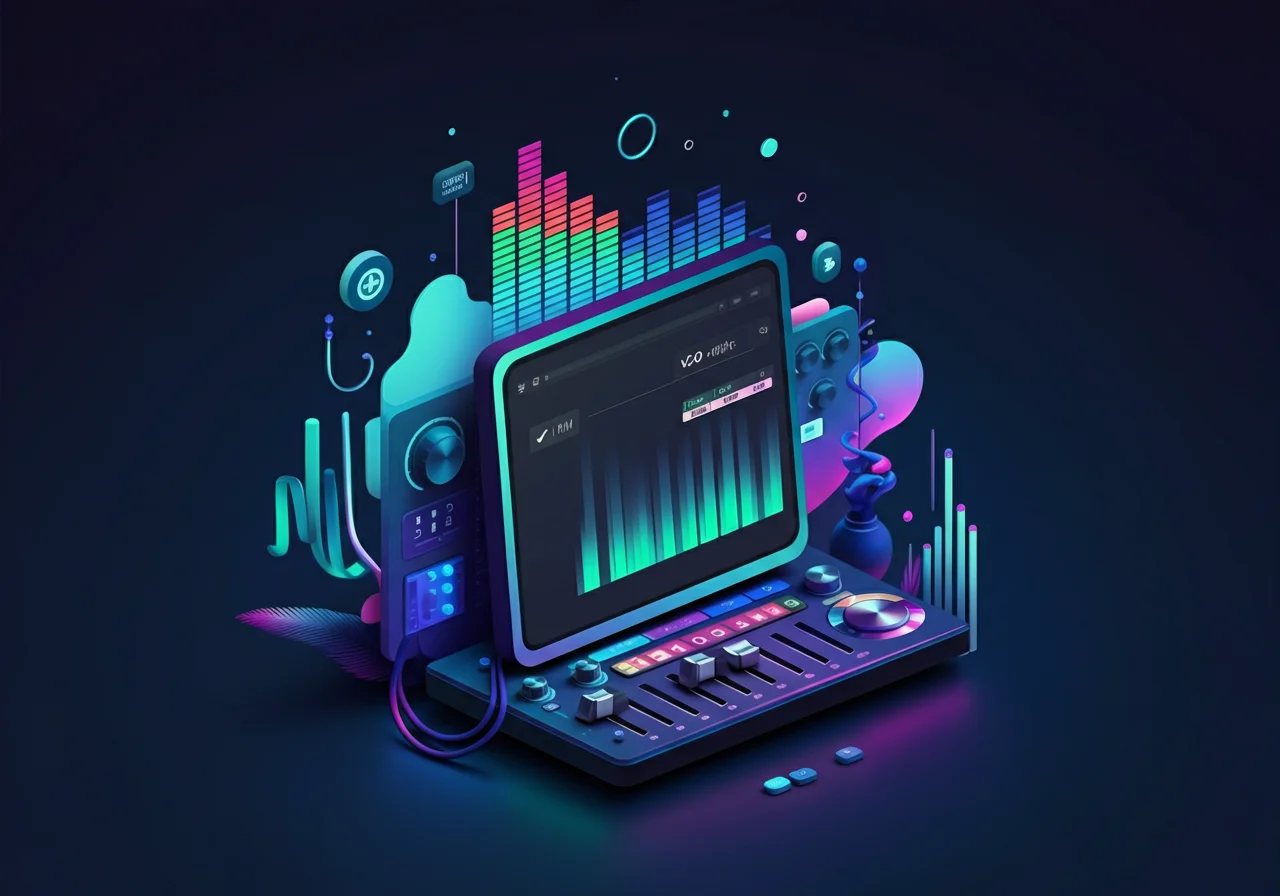Music production can feel like a daunting world to enter, filled with complex software and technical jargon. But what if there was a tool designed to be both powerful and intuitive? That’s where software Ableton Live comes in. Whether you’re a budding producer or an experienced artist, Ableton Live offers a flexible and creative environment to bring your musical ideas to life.
This guide will walk you through everything you need to know to get started with Ableton. We’ll explore its unique features, show you how to create your first track, and even touch on using it for live performances. By the end, you’ll understand why millions of creators choose Ableton for their music production needs.
Getting to Know Ableton Live
Ableton Live is a digital audio workstation (DAW) that stands out for its dual-workflow interface. It’s designed not just for composing and arranging music in a traditional timeline but also for live performance and improvisation. This unique approach makes it a favorite among electronic musicians, DJs, and producers across all genres.
Key Features and Interface
When you first open Ableton Live, you’ll be greeted by one of its two main views: Session View or Arrangement View.
- Session View: This is a grid-based interface where you can launch clips of audio or MIDI in a non-linear fashion. It’s perfect for brainstorming ideas, jamming, and performing live. You can experiment with different combinations of loops and samples on the fly, making it an incredibly powerful tool for creativity.
- Arrangement View: This is a more traditional, timeline-based layout where you can arrange your clips to structure a full song. You record your performance from the Session View into the Arrangement View, or build your track from scratch by placing clips along the timeline.
Beyond these two views, Ableton is packed with features:
- Built-in Instruments and Effects: Live comes with a comprehensive library of virtual instruments (like synthesizers and samplers) and audio effects (like reverb, delay, and EQ).
- Warping: Ableton’s time-stretching algorithm, known as Warping, is legendary. It lets you change the tempo of audio clips without affecting their pitch, making it easy to sync loops and samples.
- MIDI Capabilities: Ableton offers robust tools for recording, editing, and composing with MIDI, giving you full control over virtual instruments.
Creating Your First Song in Ableton
Ready to make some music? This step-by-step guide will help you create a simple track from scratch.
Step 1: Set Up Your Project
Open Ableton Live. The default project includes two MIDI tracks and two audio tracks. For this walkthrough, we’ll focus on using the Session View to build our ideas. Start by setting a tempo for your project in the top-left corner of the screen. A good starting point for many electronic genres is around 120 BPM.
Step 2: Create a Drum Beat
- Select a MIDI track.
- In the Browser on the left, navigate to Drums > Drum Kits.
- Drag a drum kit of your choice onto the MIDI track. This will load a “Drum Rack” instrument.
- Double-click an empty clip slot on that track to create a new MIDI clip.
- In the MIDI editor at the bottom, you can now draw in notes to create a beat. A simple pattern could be a kick on every beat (1, 1.2, 1.3, 1.4), a snare on the second and fourth beats (1.2, 1.4), and hi-hats in between.
Step 3: Add a Bassline
- Select the second MIDI track.
- In the Browser, go to Sounds > Bass.
- Drag a bass sound onto the track.
- Create a new MIDI clip and draw in a simple bassline that complements your drum beat. Try to follow the root notes of a simple chord progression.
Step 4: Add a Melody or Chords
- Use an audio track to add a melodic loop. Go to Packs > Core Library > Samples > Loops. Find a loop you like and drag it into an audio track’s clip slot. Ableton will automatically warp it to fit your project’s tempo.
- Alternatively, you can create your own melody on a MIDI track using an instrument from Sounds > Synth Lead or Sounds > Pad.
Step 5: Arrange Your Track
Once you have a few clips playing together in Session View that you like, you can record them into the Arrangement View to build a song structure.
- Click the global record button at the top of the screen.
- Launch your clips and scenes in the Session View in the order you want them to appear in your song.
- As you do this, your performance will be recorded onto the Arrangement View timeline.
- Switch to Arrangement View (using the Tab key or the button in the top right) to see your recorded song. You can then refine the arrangement by moving, copying, and editing the clips.
Ableton for Live Performances
Ableton Live’s Session View was built for the stage. It allows you to launch clips and scenes in real-time, letting you improvise and adapt your set to the crowd’s energy. You can map clips, effects, and instrument parameters to a MIDI controller for hands-on control, turning your laptop into a powerful live instrument. Many artists use it to trigger backing tracks, control synthesizers, and process live vocals or instruments with effects.
Ableton vs. Other DAWs
How does Ableton stack up against other popular music production software?
- Ableton vs. FL Studio: FL Studio is often praised for its fast MIDI editing and pattern-based workflow, making it popular in hip-hop and electronic music. Ableton’s strength lies in its intuitive audio handling and live performance capabilities.
- Ableton vs. Logic Pro: Logic Pro is a Mac-only DAW known for its massive library of high-quality stock sounds and plugins, making it a great all-in-one solution for producers and songwriters. Ableton is more focused on workflow flexibility and creative experimentation.
The “best” DAW really depends on your personal workflow and musical goals. Many producers find Ableton’s unique design to be the most inspiring for getting ideas down quickly.
Level Up Your Ableton Skills
Once you’ve mastered the basics, there’s a world of advanced techniques to explore.
- Audio Effect Racks: Group multiple effects into a single device and map key parameters to macro knobs for complex sound manipulation.
- Max for Live: This is a toolkit integrated into Ableton Live Suite that allows you to build your own instruments, effects, and tools. The possibilities are nearly endless.
- Automation: Automate almost any parameter in Ableton—like volume, panning, or filter cutoff—to add movement and dynamics to your tracks.
Where to Learn More
The journey with Ableton is a continuous learning process. Here are some excellent resources to help you along the way:
- Ableton’s Official Website: They offer tutorials, a user manual, and a forum.
- YouTube Channels: Channels like You Suck At Producing, Mr. Bill, and Andrew Huang offer fantastic tutorials for all skill levels.
- Online Courses: Platforms like Coursera, Udemy, and Skillshare have in-depth courses on Ableton Live.
Why Ableton Is a Game-Changer
Ableton Live is more than just a piece of software; it’s a creative partner. Its intuitive workflow removes technical barriers, allowing you to focus on what matters most—your music. From sketching initial ideas in Session View to finalizing a full track in Arrangement View and then taking it to the stage, Ableton provides a seamless and inspiring environment for modern music creators. If you’re looking for a tool that can grow with you on your musical journey, look no further.

